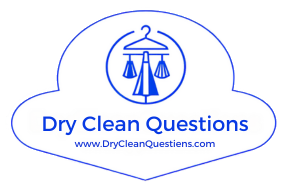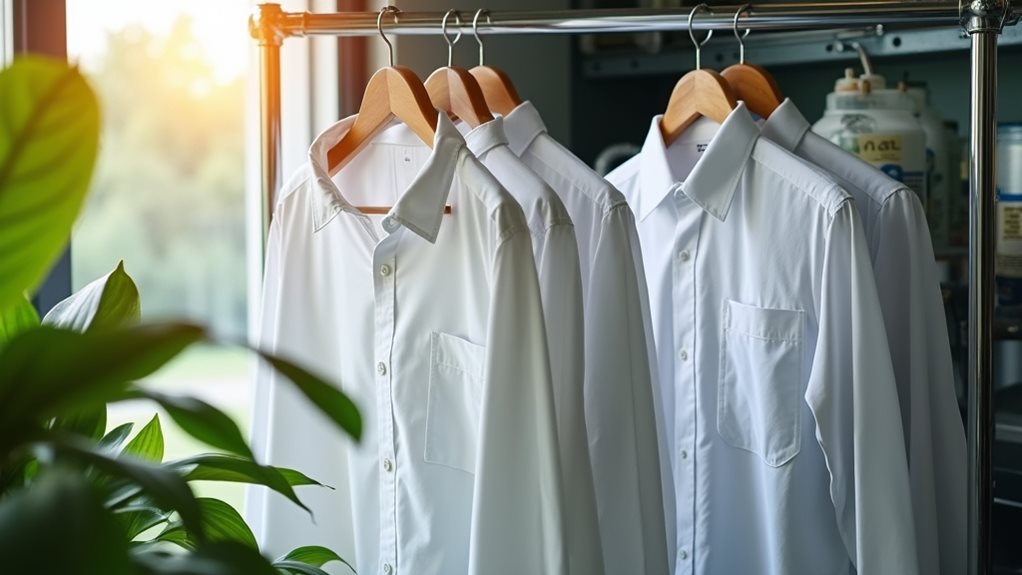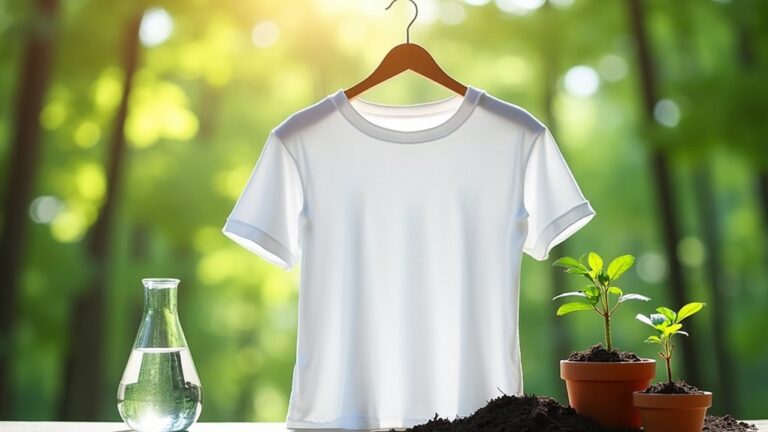Traditional dry cleaning isn’t eco-friendly since 85% of cleaners still use perchloroethylene, a probable carcinogen that contaminates soil and water while releasing toxic vapors in your home. However, you’ve got genuinely green alternatives like wet cleaning with biodegradable detergents, liquid CO2 methods, and silicone-based solvents that break down into harmless sand, water, and carbon dioxide. These safer options protect your family’s health while eliminating environmental pollution, and discovering how to identify truly eco-friendly cleaners will transform your wardrobe care forever.
Understanding Traditional Dry Cleaning Chemicals and Their Environmental Impact
When I first started paying attention to where my clothes went after dropping them off at the corner dry cleaner, I honestly didn’t think much about the chemicals swirling around behind those mysterious back-room machines – but now I wish I’d been more curious sooner.
Traditional dry cleaning relies heavily on perchloroethylene (perc), a volatile organic compound that’s basically a chemical cocktail you wouldn’t want near your family.
Perc isn’t just harsh on fabrics – it’s a toxic chemical cocktail that poses serious risks to your family’s health and safety.
This toxic chemical doesn’t just vanish after cleaning your favorite blazer – it seeps into soil, contaminates drinking water, and creates serious environmental impact that affects entire ecosystems.
Here’s the kicker: about 85% of cleaners still use perc, which means finding truly eco-friendly dry cleaners requires some detective work on your part.
The International Agency for Research on Cancer has classified perc as a probable human carcinogen, with studies linking occupational exposure to increased risks of bladder, esophageal, and cervical cancers.
Health Risks Associated With Perchloroethylene and Other Toxic Solvents

The sobering reality hit me when I learned that the same chemical making my suits look pristine was classified as a “probable” human carcinogen – suddenly, that fresh dry-cleaned smell didn’t seem so appealing anymore.
You see, perchloroethylene poses serious health risks that extend far beyond what I initially imagined, affecting everyone from dry cleaning workers to your own family.
These toxic solvents can cause liver damage, kidney problems, dizziness, and respiratory irritation, while prolonged exposure increases cancer risks considerably.
What’s particularly unsettling is how carcinogenic chemicals from the cleaning process follow your clothes home, releasing harmful vapors that concentrate indoors.
This becomes especially concerning if you’re a nursing mother or have infants, since they’re more vulnerable to these environmental toxins. 😟
To minimize exposure, it’s crucial to let freshly dry cleaned garments air out before wearing them, as PERC residues can remain on clothes that haven’t been properly ventilated.
Exploring Green Alternatives: Wet Cleaning and Liquid Carbon Dioxide Methods
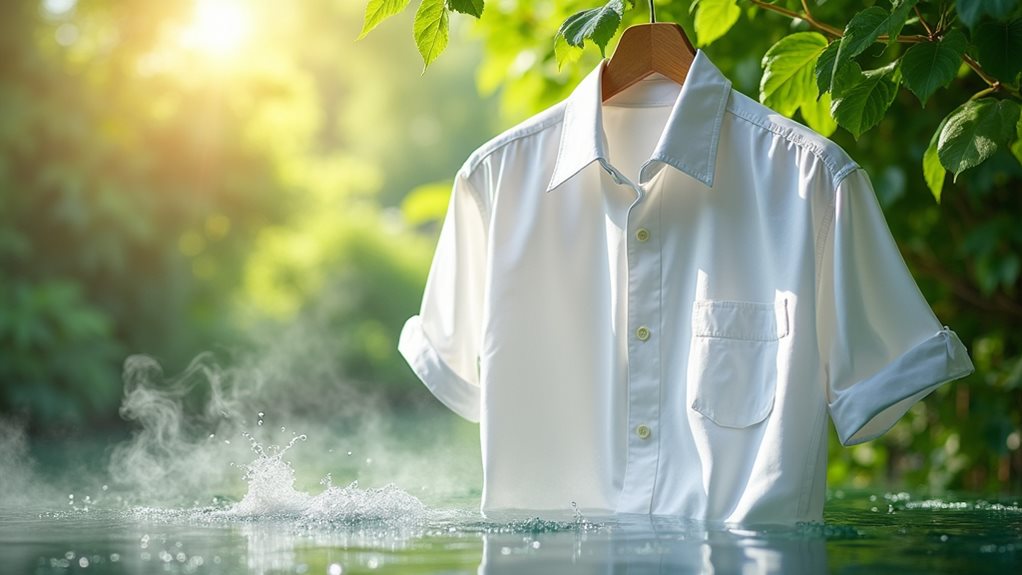
Fortunately, my quest to find safer alternatives led me to discover that innovative cleaning methods can give you impeccably clean clothes without the toxic baggage that kept me up at night worrying about my family’s health.
Wet cleaning became my first revelation, using water and biodegradable detergents in specialized machines that actually treat fabrics more gently than traditional methods.
Wet cleaning revolutionized my laundry routine with water-based solutions that pamper fabrics while keeping my family safe from toxic chemicals.
Then I stumbled upon liquid carbon dioxide cleaning, which uses pressurized CO2 as a solvent—brilliant, right? 😊
Both environmentally friendly options eliminate your exposure to harmful chemicals like perchloroethylene, that probable carcinogen lurking in conventional dry cleaning.
These cleaning methods not just protect your family’s wellbeing but also reduce environmental pollution, proving you don’t have to sacrifice cleanliness for safety.
The industry has also embraced silicone-based solutions as another eco-friendly alternative that maintains excellent cleaning effectiveness while addressing the environmental and health concerns associated with traditional solvents.
How to Identify Truly Eco-Friendly Dry Cleaners
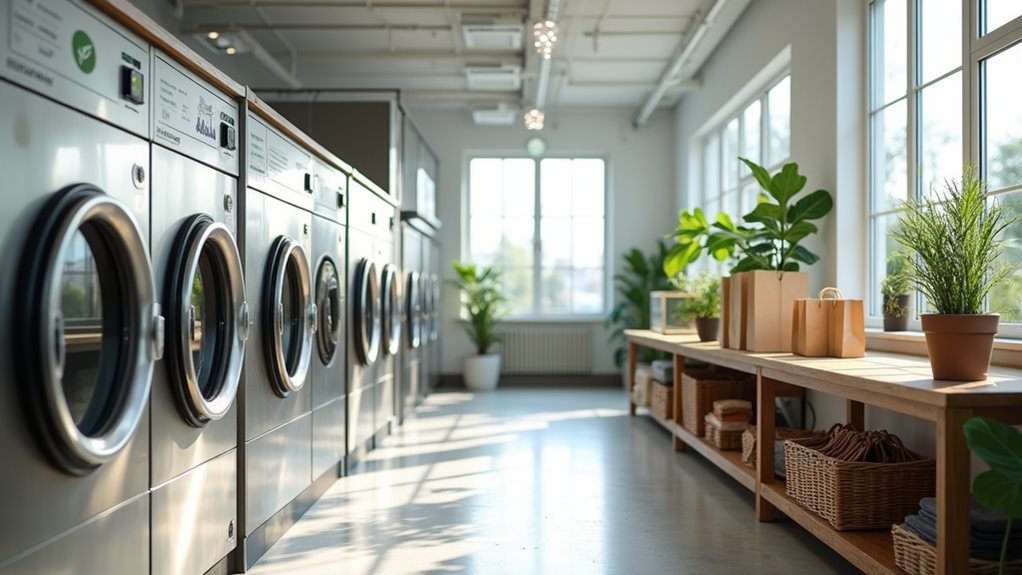
After discovering these amazing green alternatives, I quickly realized that finding a genuinely eco-friendly dry cleaner requires some detective work, since many businesses love to throw around buzzwords like “green” and “organic” without actually changing their harmful practices.
You’ll want to ask directly about their specific cleaning methods – look for professional wet cleaning or liquid carbon dioxide cleaning, rather than vague promises about being “natural.”
Don’t be shy about inquiring how they handle waste disposal, because truly eco-friendly cleaners implement proper waste management systems.
I’ve learned to watch for red flags like hydrocarbon cleaning methods, which sound fancy but are still petroleum-based.
Also check if they use reusable garment bags and hangers – these small details reveal their genuine commitment to non-toxic methods.
Be particularly cautious of cleaners still using perchloroethylene (perc) as this chemical solvent has been linked to groundwater contamination and serious air pollution concerns.
The Role of Silicone-Based Solvents in Sustainable Cleaning
When you’re searching for truly sustainable dry cleaning options, silicone-based solvents like those used in GreenEarth cleaning represent a fascinating shift from the harsh petrochemicals that dominated the industry for decades, offering you a gentler approach that’s derived from something as simple as sand.
I’ve watched clients express genuine relief when they learn these innovative solvents break down into harmless byproducts—literally just sand, water, and carbon dioxide—rather than lingering in our environment like unwelcome party guests who refuse to leave 🌱.
Unlike traditional perchloroethylene solvents that have raised significant health and environmental concerns, these silicone-based alternatives provide effective cleaning power while maintaining safety standards.
You’ll find that understanding both the impressive benefits of GreenEarth technology and conducting your own environmental impact assessment can transform how you think about professional garment care, helping you make choices that protect both your favorite clothes and the planet we all share.
Green Earth Solvent Benefits
Since discovering Green Earth solvent a few years back during my own quest for gentler cleaning options, I’ve been genuinely impressed by how this silicone-based alternative transforms the entire dry cleaning experience.
Unlike those harsh petrochemical solvents that made me cringe thinking about what they’d do to my favorite silk blouse, Green Earth’s sand-derived formula treats your garments with remarkable care.
You’ll notice your clothes emerge not only clean, but actually brighter and fresher-smelling than before – something cleaners claim happens because this environmentally friendly solvent works without the aggressive chemicals.
What really sold me was learning that Green Earth breaks down into harmless sand, water, and carbon dioxide when released, making the entire cleaning process genuinely sustainable while producing minimal waste. 🌱
Green Earth represents a significant improvement over traditional perchloroethylene solvents, which have dominated the dry cleaning industry for decades despite their environmental and health concerns.
Environmental Impact Assessment
While researching the real environmental impact of different cleaning methods for this guide, I discovered that silicone-based solvents represent one of the most notable breakthroughs in sustainable dry cleaning technology we’ve seen in decades.
You’ll find that these environmentally friendly alternatives literally transform into harmless substances—water, carbon dioxide, and sand—when they break down, which honestly made me do a little happy dance when I first learned about it! 😊
Unlike traditional dry cleaning methods that produce tons of hazardous waste, silicone-based solvents create minimal waste during operations, markedly reducing your carbon footprint.
When you choose cleaners using these innovative solvents, you’re supporting an industry shift toward sustainability while protecting both human health and wildlife from toxic contamination.
For those seeking even more eco-conscious options, steam cleaning offers another chemical-free alternative that uses high-temperature water vapor to effectively remove dirt and odors from garments.
Reducing Plastic Waste Through Reusable Hangers and Garment Bags

Although most of us don’t think twice about those flimsy wire hangers and crinkly plastic bags that come with our freshly cleaned clothes, these seemingly innocent items contribute to a staggering 300 million pounds of plastic waste each year—and honestly, I learned this the hard way after watching my closet become a graveyard of tangled hangers that I couldn’t bring myself to throw away but had no idea how to properly recycle.
Here’s what switching to eco-friendly alternatives can do:
- Save thousands of hangers from landfills (reusable hangers last through thousands of uses)
- Eliminate plastic garment bags that recycling centers often reject
- Support sustainable practices that actually make a difference
You’ll find that choosing dry cleaners offering reusable options dramatically reduces your plastic waste footprint. While these polyethylene bags are technically recyclable, they require special handling and must be taken to designated drop-off locations rather than your curbside bin.
State Regulations and Industry Changes Driving Green Practices

When government officials finally realized that traditional dry cleaning chemicals were literally poisoning communities—and I mean this quite seriously, considering perc has been linked to cancer and neurological damage—states like New Jersey and California stepped up in 2007 with groundbreaking regulations that forced the entire industry to rethink how they clean our favorite blazers and delicate blouses.
These state regulations didn’t just politely suggest changes; they demanded a complete overhaul, pushing businesses toward green practices that actually protect environmental health instead of threatening it.
You’ve probably noticed more dry cleaners advertising eco-friendly options lately, and that’s no coincidence—consumer demand combined with regulatory pressure creates real change.
Smart business owners recognized that adapting to toxic dry cleaning chemical restrictions wasn’t just about compliance; it was about survival in an increasingly health-conscious market.
Beyond the immediate health concerns, traditional dry cleaning methods create a significant environmental burden through contaminated groundwater and soil when these harsh chemical solvents are improperly disposed of by facilities.
Making Informed Choices for Your Wardrobe and the Environment

Since you now understand how regulations have pushed the industry toward safer practices, it’s time to roll up your sleeves and become a detective when choosing where to entrust your favorite cashmere sweater or that interview suit you can’t afford to replace.
Finding truly eco-friendly dry cleaning requires asking the right questions and pushing past vague marketing claims that sound impressive but mean nothing.
Don’t fall for flashy eco-labels—dig deeper and demand real answers about their actual cleaning methods and environmental practices.
When you’re evaluating sustainable options, look for these specific cleaning methods that genuinely reduce environmental impact:
- Professional wet cleaning – uses biodegradable soaps and water instead of toxic chemicals
- Liquid carbon dioxide cleaning – completely non-toxic and leaves zero harmful residue
- Avoid hydrocarbon or siloxane processes – these still pose environmental concerns despite green marketing
Traditional dry cleaning methods rely heavily on perchloroethylene (PERC), a carcinogenic chemical that can contaminate groundwater and pose serious health risks to both workers and surrounding communities.
Your detective work protects both your health and our planet!
